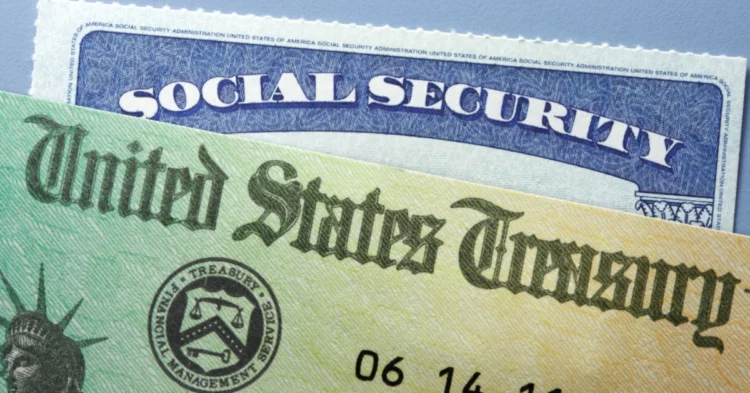If you’ve recently opened your mailbox to find a notice from the Social Security Administration (SSA), you’re not alone—and the contents might be financially unsettling. As of March 2025, the SSA has ramped up efforts to recover billions of dollars in overpaid benefits, sparking concern and confusion among millions of Americans who rely on Social Security as a financial lifeline.
Table of Contents
From retirees to disabled individuals, many are now being told they were paid too much and must return the excess—often through steep deductions from their monthly checks. This policy shift is not only causing anxiety but also financial hardship, especially for those on fixed incomes.
In this detailed breakdown, we’ll explain what the overpayment letters mean, what has changed, how to respond, and what you can do to minimize the impact.
What Are Social Security Overpayments?
Overpayments occur when the SSA disburses more benefits than a person is legally entitled to receive. This can happen for a number of reasons:
- Delayed reporting of income or work status changes
- Clerical errors or miscalculations by the SSA
- Changes in living arrangements or marital status
- Incorrect eligibility determinations
While overpayments are not uncommon, the new approach to collecting them has become significantly more aggressive in 2025.
Confirmed 2026 COLA Increase Could Push Monthly Benefits Over $2,000 for First Time in History
What’s New in 2025? SSA’s Stricter Repayment Policy
The SSA’s revised policy rolled out in March 2025, targeting individuals who were overpaid under Title II benefits, which include:
- Retirement benefits
- Disability Insurance (SSDI)
- Survivors benefits
Previously, the agency could deduct 100% of monthly benefits until the overpayment was repaid in full. After widespread backlash and concern from advocacy groups, the SSA revised the policy in April 2025, capping deductions at:
- 50% of a monthly check for most Title II beneficiaries
- 10% for Supplemental Security Income (SSI) recipients
While the reduced cap offers some relief, losing half of your Social Security income can still be financially devastating.
Who is Affected by the SSA’s Overpayment Crackdown?
- Current beneficiaries of Title II programs (retirement, SSDI, survivors)
- SSI recipients, though their cap remains at 10%
- Individuals who received an overpayment after March 27, 2025
- Those who were unaware they were overpaid or didn’t catch SSA errors
Important: If you were already repaying an overpayment prior to March 27, your repayment schedule stays the same and is not affected by the new 50% cap.
What to Do If You Receive an SSA Overpayment Letter
If you’ve received a letter from the SSA demanding repayment, don’t panic—but don’t ignore it either. You have options, but you must act quickly.
1. Appeal the Overpayment (Within 90 Days)
You can challenge the overpayment if you believe:
- The overpayment notice is incorrect
- The amount owed is inaccurate
- You were not at fault for the error
File Form SSA-561 to request a reconsideration.
2. Request a Waiver
If repaying the overpayment would cause undue financial hardship, or if the error was clearly SSA’s fault, you can request a waiver of repayment using Form SSA-632-BK.
You don’t have to repay while the waiver is under review.
3. Request a Lower Deduction Rate
If 50% (or even 10% for SSI) is too much to lose from your monthly check, ask the SSA for a reduction in the repayment rate by submitting a written request and proof of hardship (such as utility bills, rent/mortgage, medical expenses).
Challenges: Delays, Long Waits, and Confusion
One of the biggest issues facing Social Security recipients right now isn’t just the financial burden—it’s accessing support. With ongoing staffing shortages and long phone wait times, many individuals are struggling to:
- Reach SSA representatives
- Get clarity on repayment amounts
- Submit or follow up on appeals and waivers
Advocacy groups have urged the SSA to streamline its overpayment correction process, but so far, the system remains sluggish and bureaucratic.
Why Is the SSA Cracking Down Now?
The Social Security Administration is under pressure to recover billions in overpayments that have built up over the past several years. A 2023 Inspector General report revealed that SSA had issued $21 billion in overpayments in a single year—prompting renewed scrutiny from Congress and the public.
While the recovery effort may be fiscally justified, critics argue the execution is flawed, punishing recipients for systemic errors that often originate within the SSA itself.
How to Protect Yourself from Future Overpayment Issues
Whether you’ve received a letter or want to avoid one in the future, here are some proactive steps:
- Report income and work changes promptly
- Keep documentation of any communication with SSA
- Regularly review your Social Security statement for discrepancies
- Consult a legal or benefits advisor if you’re unsure of your obligations
- Check your SSA account online at ssa.gov/myaccount
Final Thoughts
The 2025 SSA overpayment letters are more than just administrative notices—they’re a wake-up call for millions who rely on Social Security. Whether the overpayment was your fault or not, the burden now falls on you to respond quickly and protect your financial security.
As the agency pushes harder to recoup overpaid benefits, it’s critical to stay informed, respond within the deadlines, and advocate for yourself through the available channels. For many, it could mean the difference between financial stability and hardship.

